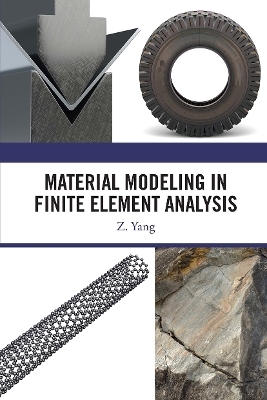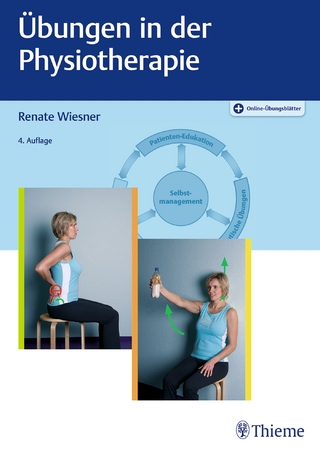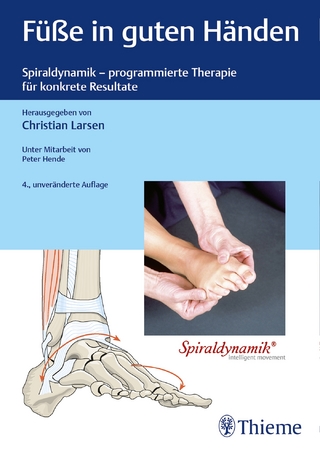
Material Modeling in Finite Element Analysis
CRC Press (Verlag)
978-1-032-65411-9 (ISBN)
- Titel ist leider vergriffen;
- Artikel merken
Finite element analysis has been widely applied in mechanical, civil, and biomedical designs. This book aims to provide the readers comprehensive views of various material models with practical examples, which would help readers understand various materials, and build appropriate material models in the finite element analysis.
This book is composed of four main parts: 1) metals, 2) polymers, 3) soils, and 4) modern materials. Each part starts with the structure and function of different materials and then follows the corresponding material models such as BISO, MISO, Chaboche model in metals, Arruda-Boyce model, Mooney-Rivlin model, Ogden model in polymers, Mohr-Coulomb model, Cam Clay model and Jointed Rock model in geomechanics, composites and shape memory alloys in modern materials. The final section presents some specific problems, such as metal forming process, combustion chamber, Mullins effect of rubber tire, breast shape after breast surgery, viscoelasticity of liver soft tissues, tunnel excavation, slope stability, orthodontic wire, and piezoelectric microaccelerometer. All modeling files are provided in the appendixes of the book.
This book would be helpful for graduate students and researchers in the mechanical, civil, and biomedical fields who conduct finite element analysis. The book provides all readers with comprehensive understanding of modeling various materials.
Z. Yang received his PhD in Mechanical Engineering from the University of Pittsburgh in 2004. Since 2005, he has worked for big companies and national labs like Nation Energy Technology Laboratory. He has been in the field of finite element analysis over 18 years and gained much experience, especially in material modeling. Up to now, he has published twelve journal papers. In 2019, CRC Press published his first book “Finite Element Analysis for Biomedical Engineering Applications.”
Part I METALS. 2. Structure and Material Properties of Metals. 3. Some Plastic Material Models of Metals and Definition of Their Parameters. 4. Simulation of Metal Forming. 5. Simulation of Ratcheting. 6. Influence of Temperature on Material Properties. 7. Simulation of Creep. Part II POLYMERS. 8. Structure and Material Features of Polymers. 9. Hyperelasticity. 10. Viscoelasticity of Polymers. 11. Mullins Effect. 12. Usermat for Hyperelsastic Materials. Part III SOILS. 13. Soil Introduction. 14. Cam Clay Model. 15. Drucker-Prager Model. 16. Mohr-Coulomb Model. 17. Jointed Rock Model. 18. Consolidation of Soils. Part IV MODERN MATERIALS. 19. Composite Materials. 20. Functionally Graded Materials. 21. Shape Memory Alloys. 22. Simulation of Piezoelectricity. 23. Nanomaterials. Part V RETROSPECTIVE. 24. Retrospective. APPENDICES 1 Input file of curve-fitting of the Chaboche model in Section 3.3. 2. Input file of the forming process model in Section 4.2. 3. Input file of the ratcheting model in Section 5.2. 4. Input file of the combustion chamber model in Section 6.2. 5. Input file of the bolt model under pretension in Section 7.2. 6. Input file of curve-fitting of the Ogden model in Section 9.3. 7. Input file of the rubber rod model under compression in Section 9.4. 8. Input file of the liver soft tissue model in Section 10.4. 9. Input file of the rubber tire damage model in section 11.3. 10. Input file of UserHyper in Section 12.2. 11. Input file of the tower subsidence model in Section 14.3. 12 Input file of the soil-arch interaction model in Section 15.2. 13 Input file of the slope stability model in Section 16.3. 14 Input file of the tunnel excavation model in Section 17.3. 15 Input file of the settlement model in Section 18.3. 16 Input file of the composite damage model in Section 19.3. 17 Input file of the SLB model in Section 19.4. 18 Input file of the spur gear model with FGM in Section 20.3. 19 Input file of the orthodontic wire model in Section 21.2. 20 Input file of the vacuum tight shape memory flange model in Section 21.3. 21 Input file of the piezoelectric microaccelerometer model in Section 22.4. 22 Input file of the contact model in Section 23.2.
| Erscheinungsdatum | 23.08.2024 |
|---|---|
| Verlagsort | London |
| Sprache | englisch |
| Maße | 156 x 234 mm |
| Gewicht | 603 g |
| Themenwelt | Medizin / Pharmazie ► Physiotherapie / Ergotherapie ► Orthopädie |
| Technik ► Maschinenbau | |
| Technik ► Medizintechnik | |
| ISBN-10 | 1-032-65411-2 / 1032654112 |
| ISBN-13 | 978-1-032-65411-9 / 9781032654119 |
| Zustand | Neuware |
| Informationen gemäß Produktsicherheitsverordnung (GPSR) | |
| Haben Sie eine Frage zum Produkt? |
aus dem Bereich


